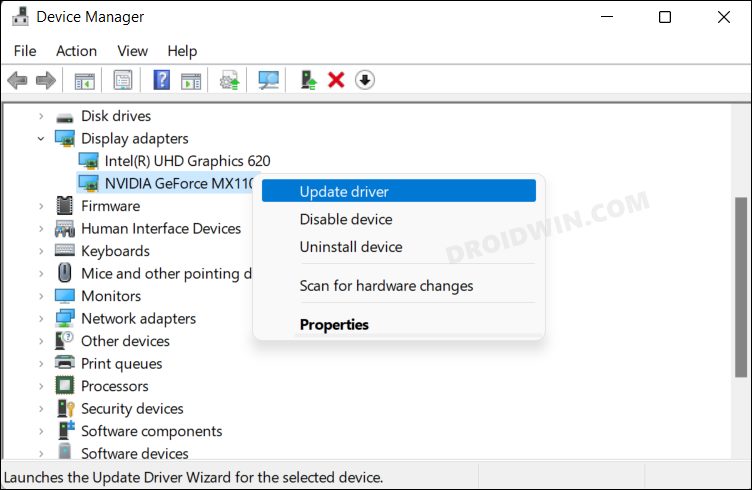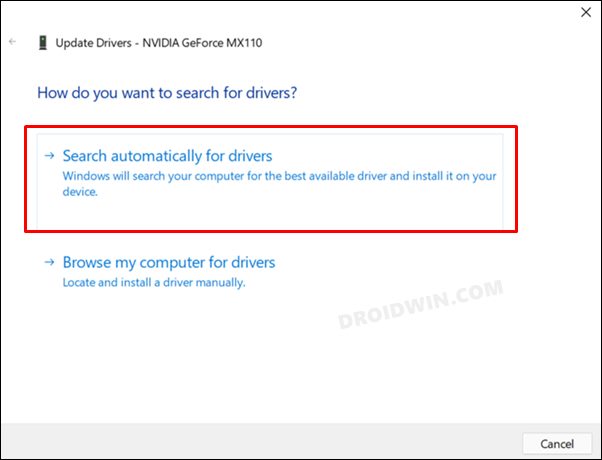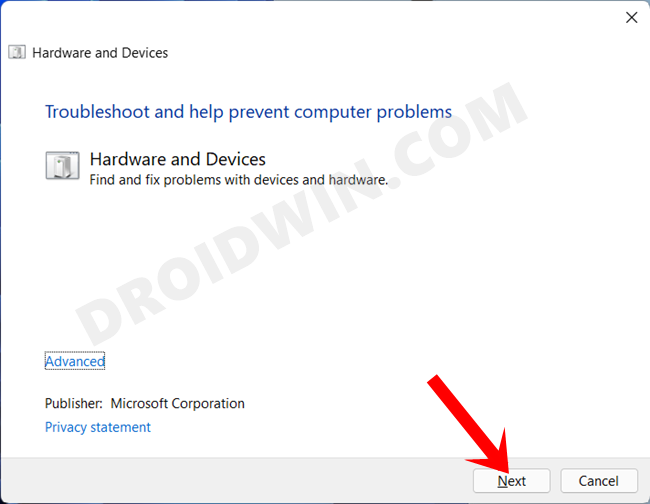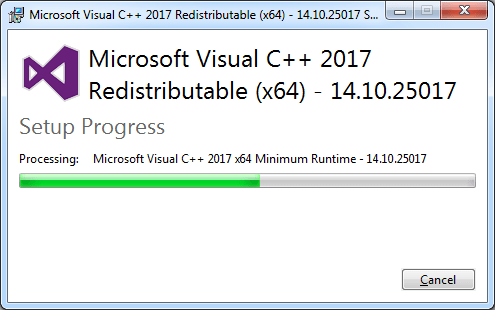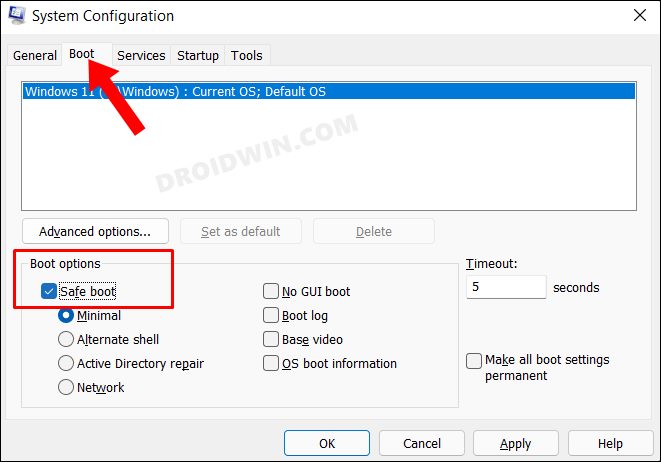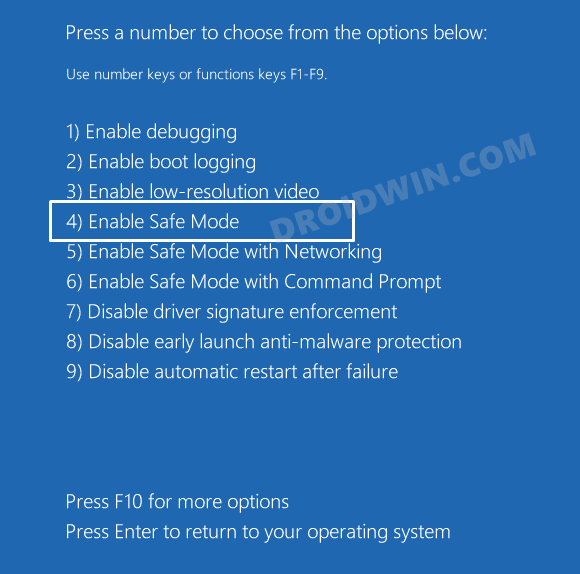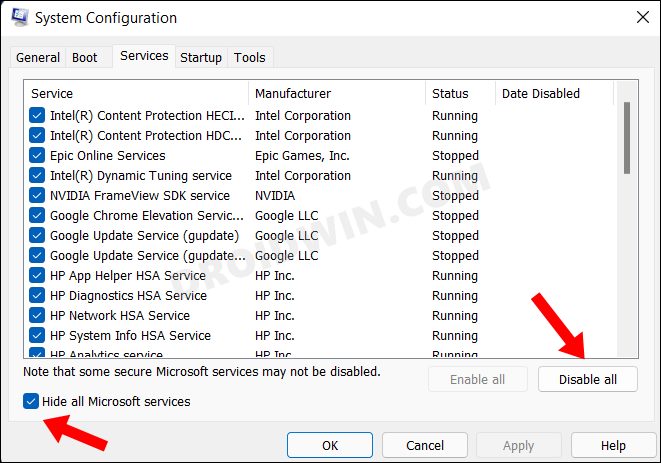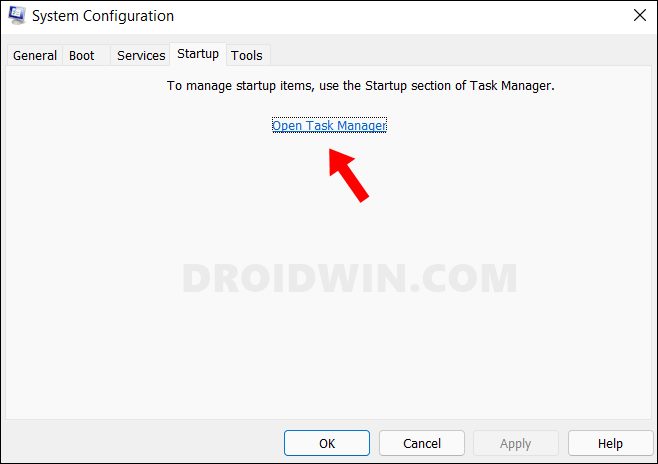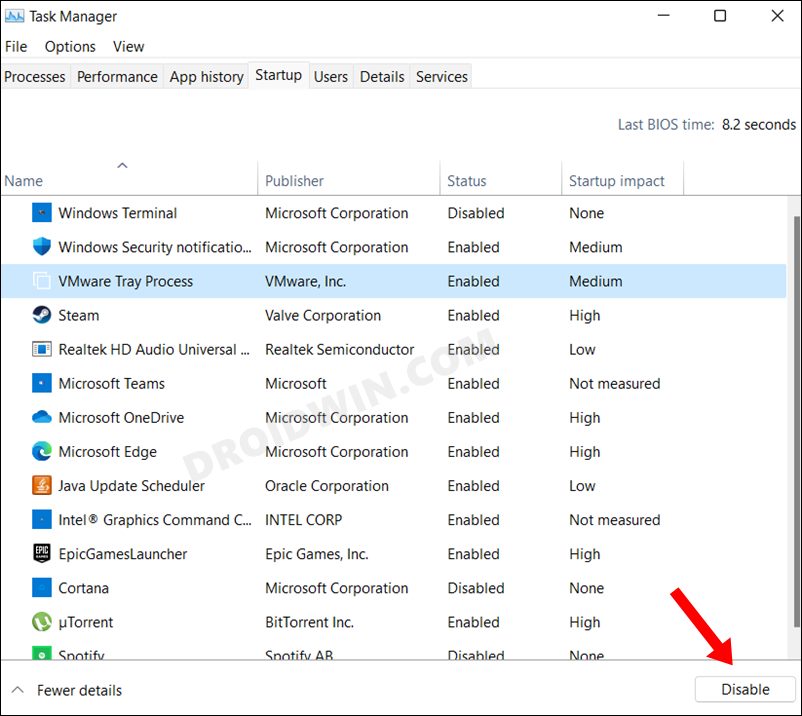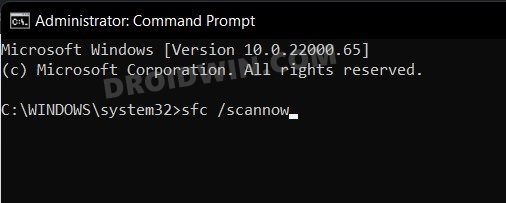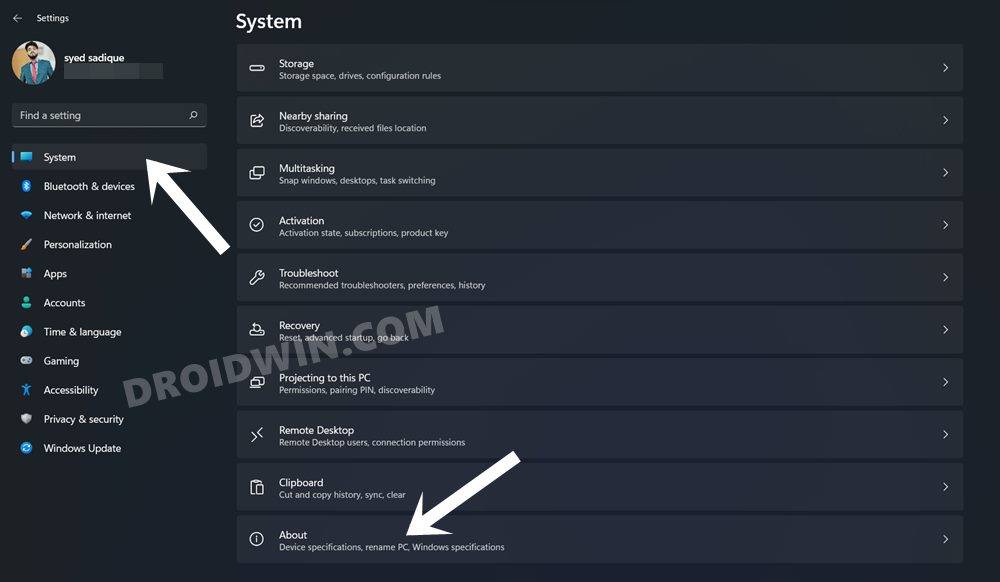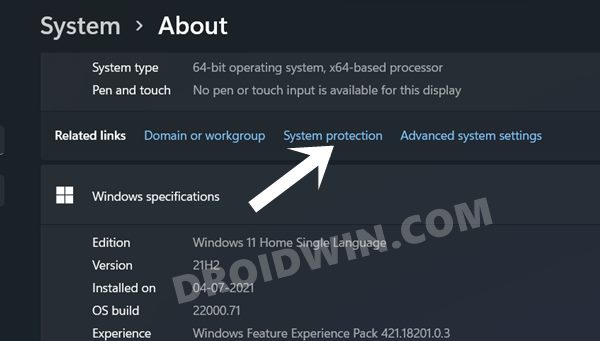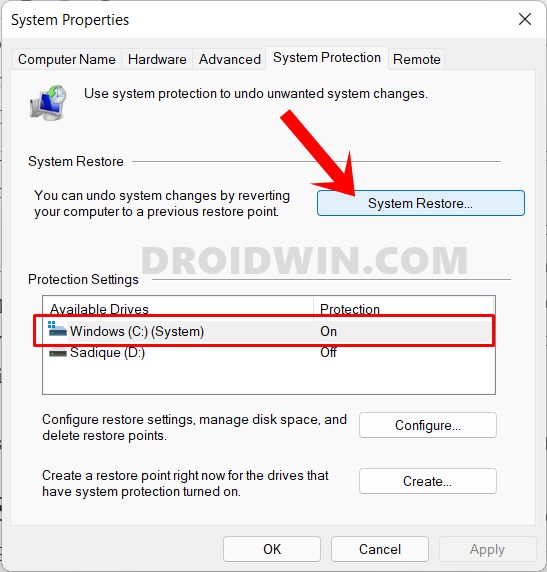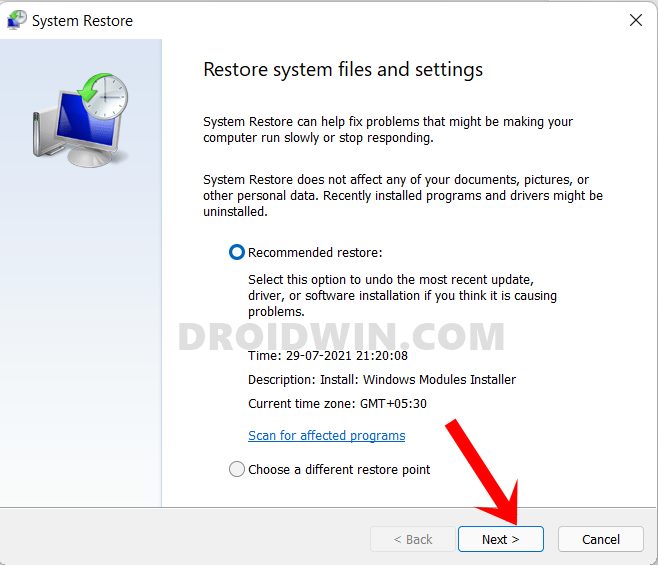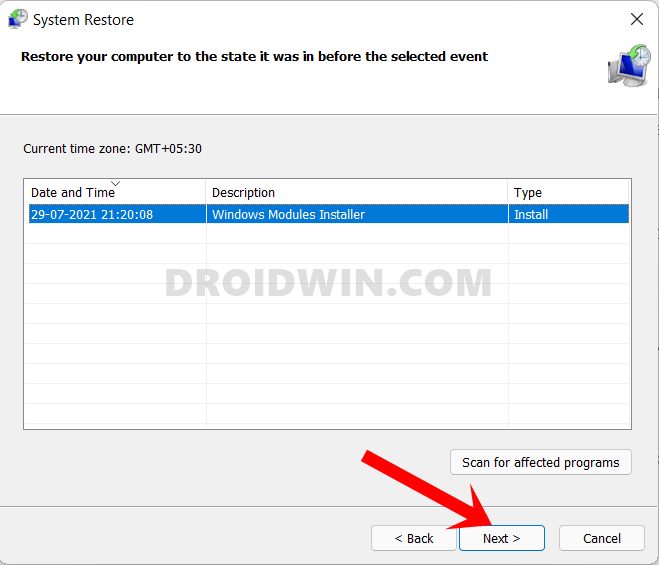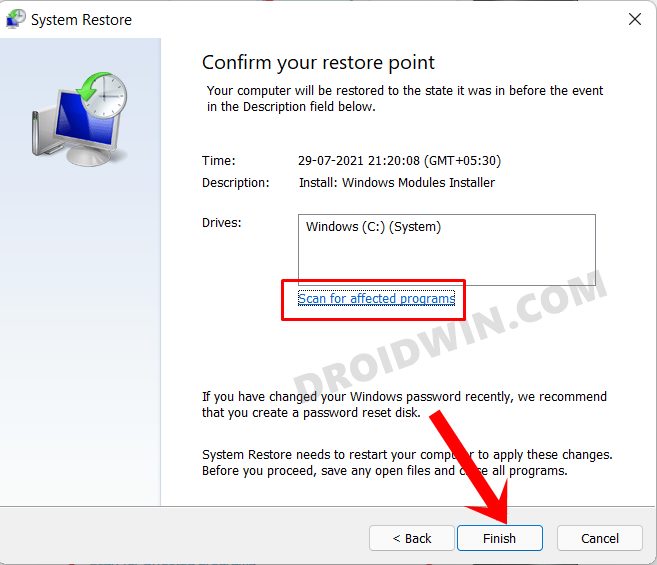However, some users have voiced their concern that they are unable to tweak this setting as the required resolution is either absent from the list or is greyed out. This is in spite of the fact that their display does support the resolution that they are trying to apply. These cases are usually software issues and could easily be rectified via a few nifty workarounds. And in this guide, we will help you with just that. Given here are various methods to fix the issue of being unable to change the screen resolution in Windows.
Fix Cannot Change Screen Resolution in Windows
It is recommended that you try out each of the below-mentioned workarounds and then see which one spells out success for you. So with that in mind, let’s get started.
FIX 1 Update Graphics Driver
Using old or outdated graphics drivers is usually the root cause of display-related issues. So your first course of action should be to update these drivers to the latest version, using the instructions given below
FIX 2 Use Windows Troubleshooters
Windows comes built-in with quite a few troubleshooter apps that scan for issues and bring out the related fixes. As for the current issue, we will be using the System Maintenance and the Hardware and Devices troubleshooters, as they are the best fit to resolve this bug.
FIX 3 Update Microsoft Visual C++ Runtime
Some applications and system software (especially the ones that use the Windows API, DirectX, and . NET) require redistributable Visual C++ runtime library packages to function correctly. So you should double-check that your PC has the latest version of this app installed. If you already have the latest version, then you might have to take the nuclear approach of reinstalling the app. Here’s how it could be done
FIX 4: Boot to Safe Mode
In some instances, a third-party app might conflict with the OS functionality as well. The best way to verify and hence rectify this issue is to boot your PC to the Safe Mode. Doing so will disable all the third-party apps and give you the stock environment with just the system apps. If you are able to select multiple files in this mode, then the culprit is an app or software. Therefore, you should consider uninstalling the recently installed apps after which the issue first came to light. Here’s how:
FIX 5: Disable Third-Party Service
A third-party service could also create a few roadblocks in selecting the desired resolution setting. Therefore, you should consider disabling all the non-Microsoft-related services and then test out the results. Here’s how it could be done
FIX 6: Use SFC and DISM Commands
System File Checker and Deployment Image Servicing and Management are two command-line utility tools that scan for corrupt Windows files and then replace them with their working counterpart. The major difference between the two is whereas the SFC replaces the corrupt files with the working ones from the cached directory on your PC, DISM does so by downloading the working files from the online Microsoft servers. And as of now, we would be making use of both these tools to fix the underlying issue.
FIX 7: Use a Restore Point
If none of the aforementioned methods spelled out success, then you should consider restoring your system to an earlier point during which it was free from this issue. Here’s how it could be done So with this, we round off the guide on how you could fix the issue of being unable to change the screen resolution in Windows. We have listed seven different fixes for the same. Do let us know which one spelled out success for you. Likewise, all your queries are welcomed in the comments section below.
Stop all not responding apps/processes at once in WindowsCtrl + C/Ctrl + V Not Working in Windows: How to FixCannot Select Multiple Files in Windows 11: How to FixHow to Block Files, Folders, and Apps from being accessed in Windows 11
About Chief Editor

